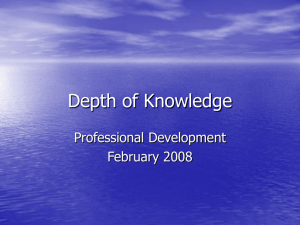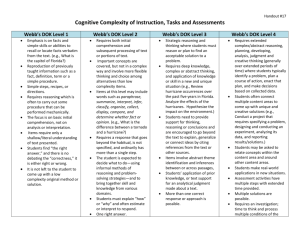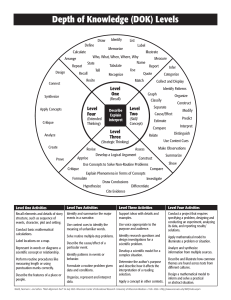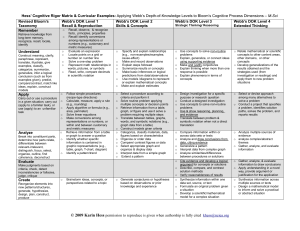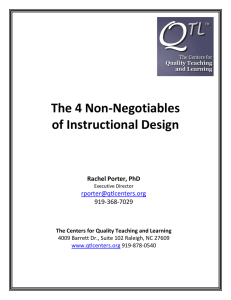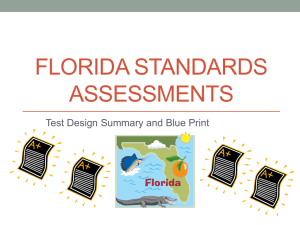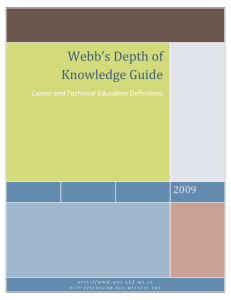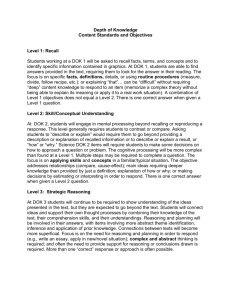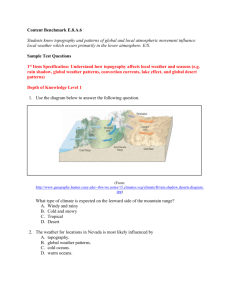Depths of Knowledge – DOK Reference Page
advertisement
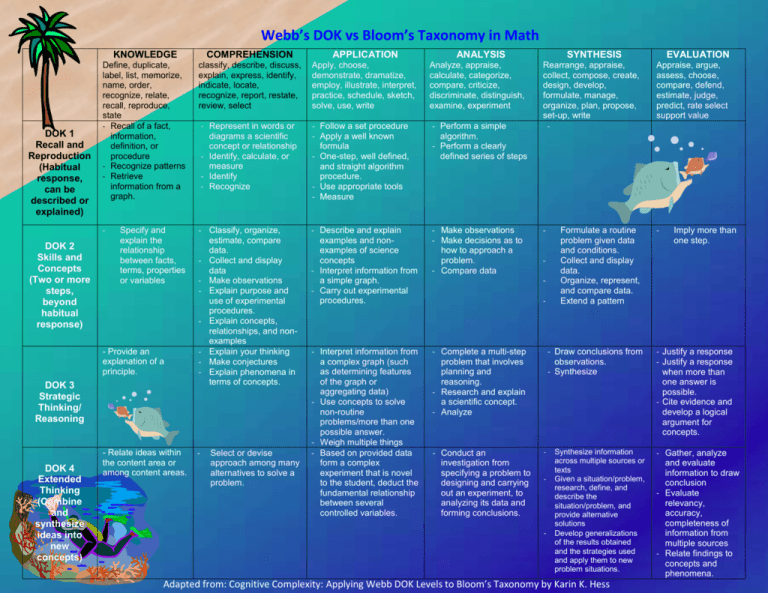
Webb’s DOK vs Bloom’s Taxonomy in Math DOK 1 Recall and Reproduction (Habitual response, can be described or explained) DOK 2 Skills and Concepts (Two or more steps, beyond habitual response) KNOWLEDGE COMPREHENSION APPLICATION Define, duplicate, label, list, memorize, name, order, recognize, relate, recall, reproduce, state - Recall of a fact, information, definition, or procedure - Recognize patterns - Retrieve information from a graph. classify, describe, discuss, explain, express, identify, indicate, locate, recognize, report, restate, review, select Apply, choose, demonstrate, dramatize, employ, illustrate, interpret, practice, schedule, sketch, solve, use, write - Represent in words or diagrams a scientific concept or relationship - Identify, calculate, or measure - Identify - Recognize - Follow a set procedure - Apply a well known formula - One-step, well defined, and straight algorithm procedure. - Use appropriate tools - Measure - Perform a simple algorithm. - Perform a clearly defined series of steps - - Classify, organize, estimate, compare data. - Collect and display data - Make observations - Explain purpose and use of experimental procedures. - Explain concepts, relationships, and nonexamples - Explain your thinking - Make conjectures - Explain phenomena in terms of concepts. - Describe and explain examples and nonexamples of science concepts - Interpret information from a simple graph. - Carry out experimental procedures. - Make observations - Make decisions as to how to approach a problem. - Compare data - Interpret information from a complex graph (such as determining features of the graph or aggregating data) - Use concepts to solve non-routine problems/more than one possible answer. - Weigh multiple things - Based on provided data form a complex experiment that is novel to the student, deduct the fundamental relationship between several controlled variables. - Complete a multi-step problem that involves planning and reasoning. - Research and explain a scientific concept. - Analyze Specify and explain the relationship between facts, terms, properties or variables - Provide an explanation of a principle. DOK 3 Strategic Thinking/ Reasoning DOK 4 Extended Thinking (Combine and synthesize ideas into new concepts) - Relate ideas within the content area or among content areas. - Select or devise approach among many alternatives to solve a problem. ANALYSIS Analyze, appraise, calculate, categorize, compare, criticize, discriminate, distinguish, examine, experiment SYNTHESIS Appraise, argue, assess, choose, compare, defend, estimate, judge, predict, rate select support value - - - - Conduct an investigation from specifying a problem to designing and carrying out an experiment, to analyzing its data and forming conclusions. EVALUATION Rearrange, appraise, collect, compose, create, design, develop, formulate, manage, organize, plan, propose, set-up, write - Formulate a routine problem given data and conditions. Collect and display data. Organize, represent, and compare data. Extend a pattern - Draw conclusions from observations. - Synthesize - - Synthesize information across multiple sources or texts Given a situation/problem, research, define, and describe the situation/problem, and provide alternative solutions Develop generalizations of the results obtained and the strategies used and apply them to new problem situations. Adapted from: Cognitive Complexity: Applying Webb DOK Levels to Bloom’s Taxonomy by Karin K. Hess Imply more than one step. - Justify a response - Justify a response when more than one answer is possible. - Cite evidence and develop a logical argument for concepts. - Gather, analyze and evaluate information to draw conclusion - Evaluate relevancy, accuracy, completeness of information from multiple sources - Relate findings to concepts and phenomena.

